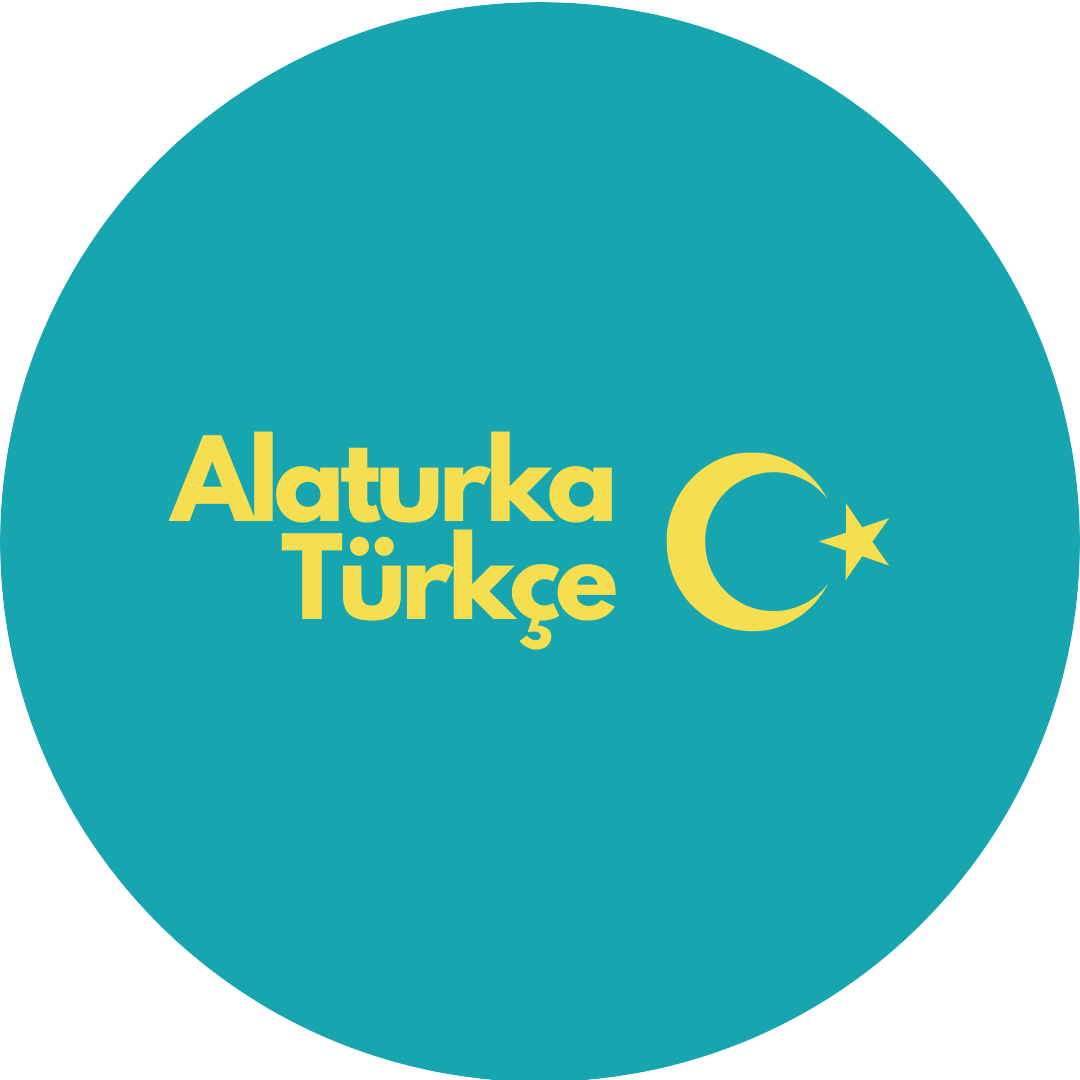[Article in English and Chinese 文章內含英文和中文版本]
This is the place where I talk a bit about the Turkish language and list grammar notes that you’ll see throughout the grammar points.
在小註裡,我會淺談土耳其語,以及列出文法標註的意思,因為這將會一直出現在文法要點中。
[EN]
For starters, here’s the usage guide related to vowel harmony and consonant harmony in grammar, which appears throughout the grammar points addressed on the website and in almost every Turkish textbook:
- Vowel Harmony 1: when you see E in the grammar points, it means the letter a or e is to be used in the suffix; whether to use a or e in the suffix depends on vowel harmony with the verb stem. (However, some textbooks may use A to indicate that a or e should be used, depending on vowel harmony with the verb stem.)
For example, -mEdEn önce means: before V. takes place. “-” is to be replaced with a verb stem. From the rule -mEdEn, we know that besides -meden, the other one is -madan, and we use -mEdEn to denote this.
e.g. Okula gitmeden önce kahvaltı yaptık. (We had breakfast before going to school.)
Her gece yatmadan önce su içer. (He/She drinks water before going to bed every night.)
- Vowel Harmony 2: when you see İ, it means one letter from the ı, i, u, ü group is to be used, depending on vowel harmony with the verb stem.
- Consonant Harmony — Hard Consonant Rule: D means either d or t is to be used, depending on whether the verb stem ends in a hard consonant (p, ç, t, k, f, h, s, ş) or not. You use t when the last letter of the verb stem ends in a hard consonant, so the hard consonant and t are in harmony. Use d when the last letter of the verb stem is not a hard consonant, i.e. when it ends in a soft consonant or in a vowel.
For example, –DİktEn sonra means: after V. takes place. Similarly, from this rule -DİktEn, we know that besides -dikten, -dıktan, -dükten, -duktan, -tikten, -tıktan, -tükten, -tuktan can also be used according to vowel and consonant harmony with the verb stem.
e.g. Diziyi izledikten sonra duş aldım. (After watching the series, I took a shower.)
Ofisten çıktıktan sonra görüşelim! (Let’s meet after getting off work!)
Eve döndükten sonra bütün gün uyudum. (After going back home, I slept for the whole day.)
Arkadaşımla konuştuktan sonra, kendimi daha iyi hissediyorum. (I feel better after talking with my friend.)
Lastly, Turkish belongs to the Turkic language family, which is characterized by such linguistic phenomena as vowel harmony, agglutination, subject-object-verb order, and the lack of grammatical gender. Other common Turkic languages include Kazakh, Kyrgyz, Uzbek, Turkmen spoken in Kazakhstan, Kyrgyzstan, Uzbekistan and Turkmenistan in Central Asia; and Azeri (or Azerbaijani) spoken in Azerbaijan in the Caucasus. For a more detailed view, under the Turkic language family, Turkish belongs to the Oghuz branch, which includes other languages such as Azeri/Azerbaijani, Turkmen, and Gagauz (spoken in Gagauzia, an autonomous region of Moldova) as in the table below.
As for other common Turkic languages, Kazakh and Kyrgyz belong to the Kipchak sub-branch, which also has Karakalpak (spoken in Karakalpakstan, an autonomous republic of Uzbekistan); and Tatar in Tatarstan, Siberian Tatar, Nogai, Karachay-Balkar in Karachay–Cherkessia and Kabardino-Balkaria, Bashkir in Bashkortostan, Kumyk and Southern Altai in Altai Republic, which are spoken in various Russian (mostly Turkic) republics. Crimean Tatar is native to Crimea, Ukraine while Dobrujan Tatar is the variety of Romania.
The Karluk sub-branch consists of Uzbek and Uyghur etc. The Siberian Turkic also comprises Turkic languages spoken in Russia’s various Turkic republics: Sakha (Yukut) in Sakha Republic (Yakutia), Tuvan in Tuva Republic, Khakas in Khakassia, and Northern Altai in Altai Republic etc. In regard to the Oghuric branch, only the Chuvash language survived in the evolution of language development, and is the language of the Russian republic Chuvashia.
| Language Family | Branch | Sub-Branch | Languages |
|---|---|---|---|
| Turkic Language Family | Common Turkic | Oghuz | Turkish, Azerbaijani, Turkmen, Gagauz, Rumelian (Balkan Gagauz), Qashqai, Chaharmahali, Khorasani Turkic, Afshari Turkic, Sonqori Turkic, Salar |
| Kipchak | Kazakh, Kyrgyz, Karakalpak, Tatar, Crimean Tatar, Siberian Tatar, Dobrujan Tatar, Nogai, Karachay-Balkar, Bashkir, Kumyk, Southern Altai, Karaim, Krymchak, Urum | ||
| Karluk | Uzbek, Uyghur, Ili Turki, Äynu | ||
| Siberian Turkic | Sakha (Yakut), Tuvan, Khakas, Northern Altai, Kumandin, Western Yugur, Dolgan, Tofa, Soyot-Tsaatan, Dukhan, Fuyu Kyrgyz, Shor, Chulym | ||
| Arghu | Khalaj | ||
| Oghuric | – | Chuvash (the only language to survive in the Oghuric branch) |
[中文]
首先,以下是有關母音和諧和子音和諧規則的介紹,在此網站和幾乎所有土耳其文學習書中,都會不斷出現這個規則的標示。
- 母音和諧 1:當看到文法要點中出現大寫的E,這表示須使用字母a或e,而要用a或e取決於動詞字根的母音,以達成母音和諧。(然而,有些學習書會使用大寫A來標注須使用a或e。)
例如-mEdEn önce意思為在……發生前。「-」代表動詞字根。從-mEdEn這個規則,我們可以了解到除了可以使用-meden外,另一個可以用的則是-madan,然後我們用-mEdEn來統一表示這個規則。
例句:Okula gitmeden önce kahvaltı yaptık. (去學校前,我們吃了早餐。)
Her gece yatmadan önce su içer. (每晚上床前,他喝水。)
- 母音和諧 2:當看到大寫İ,這表示可以使用的字母有ı, i, u, ü,而到底要使用哪個字母取決於動詞字根的母音,使兩者達到母音和諧。
- 子音和諧 — 硬子音規則:D表示可以使用d或t,取決動詞字跟是否結尾為硬字音(p、ç、t、k、f、h、s、ş)。當動詞字根的字尾為硬子音時,使用t,以使兩者達到子音和諧。如果字尾不是硬子音,例如如果字尾是軟子音或是母音的話,使用d。
例如–DİktEn sonra意思是在……發生後。同理,從-DİktEn這個規則,我們知道除了-dikten, -dıktan, -dükten, -duktan外,也可以使用-tikten, -tıktan, -tükten, -tuktan,而要使用哪一組字尾一樣要看動詞字根是什麼,使用的字尾須與動詞字根的母音和子音達成語音和諧。
例句:Diziyi izledikten sonra duş aldım. (看完影集後,我洗了澡。)
Ofisten çıktıktan sonra görüşelim! (下班後我們見個面吧!)
Eve döndükten sonra bütün gün uyudum. (回家後,我睡了一整天。)
Arkadaşımla konuştuktan sonra, kendimi daha iyi hissediyorum. (與朋友聊天後,我感覺好多了。)
最後,土耳其語屬於突厥語系,其特徵是母音和諧、黏著法構詞、主詞-受詞-動詞順序、缺乏文法性別等語言現象。其它常見的突厥語系語言包括在中亞的哈薩克、吉爾吉斯、烏茲別克和土庫曼所使用的哈薩克語、吉爾吉斯語、烏茲別克語、土庫曼語,及在高加索地區的亞塞拜然所使用的亞塞拜然語。詳細一點來看的話,突厥語系中,土耳其語屬於烏古斯語族,該語族還包含了亞塞拜然語、土庫曼語、加告茲語(摩爾多瓦加告茲自治區,加告茲人所使用的語言)等語言,如下表所示。
至於其它常見的突厥語系語言,哈薩克語和吉爾吉斯語都屬於欽察語支,該語支還有卡拉卡爾帕克語(使用於烏茲別克的自治共和國卡拉卡爾帕克共和國)、韃靼斯坦共和國的韃靼語、西伯利亞韃靼語、諾蓋語、卡拉恰伊-切爾克斯共和國及卡巴爾達-巴爾卡爾共和國中使用的卡拉恰伊-巴爾卡爾語、巴什科爾托斯坦共和國的巴什基爾語、庫梅克語、阿爾泰共和國的南阿爾泰語,這些語言在俄羅斯各共和國(主要是突厥民族共和國)中使用。 克里米亞韃靼語則用於烏克蘭克里米亞,而羅馬尼亞韃靼語則是用於羅馬尼亞。
葛邏祿語支是由烏茲別克語、維吾爾語等所組成。西伯利亞突厥語還包括俄羅斯各突厥民族共和國所使用的突厥語:薩哈共和國(雅庫特)的薩哈語(雅庫特語)、圖瓦共和國的圖瓦語、哈卡斯共和國的哈卡斯語、阿爾泰共和國的北阿爾泰語。至於烏古爾語支,在語言發展的演變中,只有楚瓦什語留存了下來,是俄羅斯楚瓦什共和國的語言。
| 語系 | 類別 | 語支 | 語言 |
|---|---|---|---|
| 突厥語系 | 共通突厥語 | 烏古斯語支 | 土耳其語、亞塞拜然語、土庫曼語、加告茲語、魯米利亞語(巴爾幹加告茲語)、卡什蓋語、察哈馬哈利語、呼羅珊突厥語、阿夫沙爾語、松戈爾突厥語、撒拉語 |
| 欽察語支 | 哈薩克語、吉爾吉斯語、卡拉卡爾帕克語、韃靼語、克里米亞韃靼語、西伯利亞韃靼語、羅馬尼亞韃靼語、諾蓋語、卡拉恰巴爾卡爾語、巴什基爾語、庫梅克語、南阿爾泰語、卡拉伊姆語、克里姆查克語、烏魯姆語 | ||
| 葛邏祿語支 | 烏茲別克語、維吾爾語、伊犁突厥語、艾努語 | ||
| 西伯利亞突厥語支 | 薩哈語(雅庫特語)、圖瓦語、哈卡斯語、北阿爾泰語、庫曼丁語、西裕固語、多爾干語、托法語、索尤特語、回紇烏梁海語、富裕吉爾吉斯語、邵爾語、楚利姆語 | ||
| 阿胡語/哈拉吉語支 | 哈拉吉語 | ||
| 烏古爾語支 | - | 楚瓦什語(烏古爾語支唯一留存的語言) |
